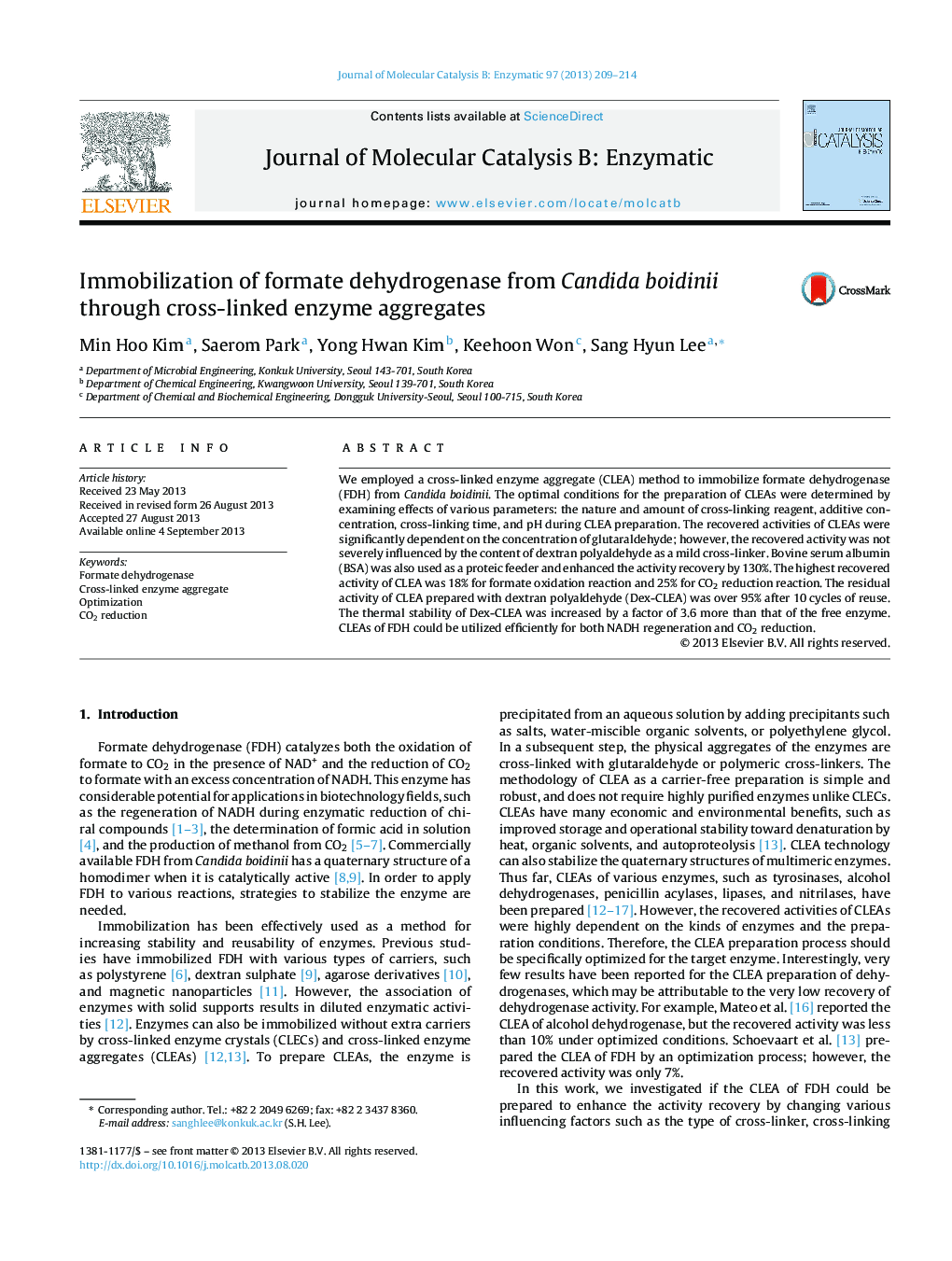| Article ID | Journal | Published Year | Pages | File Type |
|---|---|---|---|---|
| 69610 | Journal of Molecular Catalysis B: Enzymatic | 2013 | 6 Pages |
•Formate dehydrogenase from Candida boidinii was immobilized through cross-linked enzyme aggregates (CLEA).•It was shown that the kinds and concentrations of the cross-linker, the cross-linking time, and additives such as a proteic feeder had significant effects on the activity recovery of CLEAs.•Residual activity of FDH CLEA prepared under optimal conditions was over 95% after 10 times reuse.•CLEAs of FDH could be utilized efficiently for both NADH regeneration and CO2 reduction.
We employed a cross-linked enzyme aggregate (CLEA) method to immobilize formate dehydrogenase (FDH) from Candida boidinii. The optimal conditions for the preparation of CLEAs were determined by examining effects of various parameters: the nature and amount of cross-linking reagent, additive concentration, cross-linking time, and pH during CLEA preparation. The recovered activities of CLEAs were significantly dependent on the concentration of glutaraldehyde; however, the recovered activity was not severely influenced by the content of dextran polyaldehyde as a mild cross-linker. Bovine serum albumin (BSA) was also used as a proteic feeder and enhanced the activity recovery by 130%. The highest recovered activity of CLEA was 18% for formate oxidation reaction and 25% for CO2 reduction reaction. The residual activity of CLEA prepared with dextran polyaldehyde (Dex-CLEA) was over 95% after 10 cycles of reuse. The thermal stability of Dex-CLEA was increased by a factor of 3.6 more than that of the free enzyme. CLEAs of FDH could be utilized efficiently for both NADH regeneration and CO2 reduction.
Graphical abstractFigure optionsDownload full-size imageDownload as PowerPoint slide
